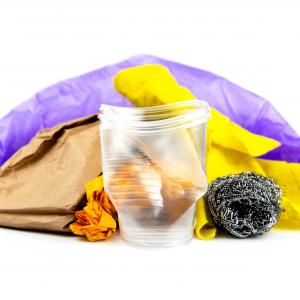
2nd Joint Call: BIOPLATE
Background
The metallization of plastics, called Plating On Plastics (POP) for decorative and functional applications is an integral part of many branches of industry. In the automotive industry, for example, in car interiors, for sanitary fittings, for shielding electronic devices or in consumer goods industry for control elements on household appliances. Electroplating usually refers to plating of metallic surfaces, and requires electric conductivity of the substrate, while the adhesion between layer and substrate is achieved by metal-metal bonds. These both aspects are not observed in POP as plastic is used. Therefore, POP processes rely on very special mechanism and pretreatment procedures. Furthermore, it is not possible to use any type of plastic for metallization in order to produce adhesive layers. Usually, POP products are based on acrylonitrile-butadiene-styrene (ABS) or acrylonitrile-butadiene-styrene – polycarbonate (ABS/PC) blend substrates. Modern societies will change into a reduced or neutral carbon footprint way of living. This means not only the use of renewable energies; it means the use of renewable resources in general – including materials. The currently available bioplastics cannot be electroplated with the existing processes and development work has to be carried out. The important thing is that the biopolymer and the electrochemical processes are developed together.
The Project
The aim of the joint research project is an optimised electroplating process for tailor-made biopolymer materials. Biopolymers from renewable raw materials will be used in the field of "Plating On Plastic" (POP) to replace non-biodegradable and oil-based materials. From this point of view, the project will have a beneficial impact for the societal change from “oil-based to green” by the intermediate of more sustainable consumable goods, packaging and vehicles.
The Science
The research to reach the targets goes deep into material science and needs competences in different disciplines of material science as well as in biotechnology and chemistry. The multidisciplinary of the project is best seen in his dual approach of improving the process of metal deposition on plastic from two perspectives: the design, synthesis and surface preparation of a suitable biopolymer from renewable resources and the optimization of the deposition procedures and conditions. This demands on the one side knowledge on design and conducting bioprocesses for a target product and on the other hand, the know-how related to developing electroplating process chains.
Two research lines are proposed regarding the design of the polymer. First, a bio-based polymer or blend having a biphasic structure, similarly to ABS, will be targeted together with a standard electroplating process but involving a suitable non-CMR etching agent like sulfuric acid. A second approach utilizes the difference between the first and second crystallization rates observed for some PHA polymers. The surface pretreatment and the electroplating process must be tailored to the biopolymers.
The Team
The BIOPLATE partners are:
- Coordinator : Dr.- Ing. Martin Metzner, Fraunhofer Institute for Manufacturing Engineering and Automation / Electroplating, Stuttgart, Germany
-
Prof. Dr. Manfred Zinn, University of Applied Sciences and Arts Western Switzerland Valais Wallis, Biotechnology and Sustainable Chemistry, Sion, Switzerland
-
Dr. Chuanchom Aumnate, Metallurgy and Materials Science Research Institute, Chulalongkorn University, Bangkok, Thailand
-
Assoc. Prof. Dr. Yuttanant Boonyongmaneerat, Metallurgy and Materials Science Research Institute, Chulalongkorn University, Bangkok, Thailand
Contact: Dr.- Ing. Martin Metzner martin.metzner@ipa.fraunhofer.de
Featured image from unsplash.com

